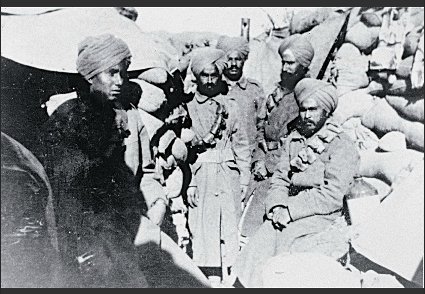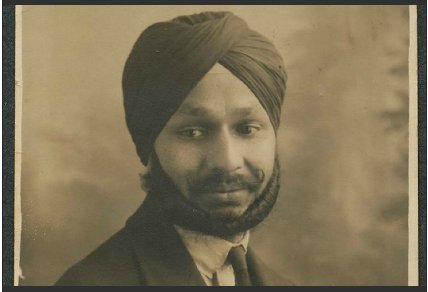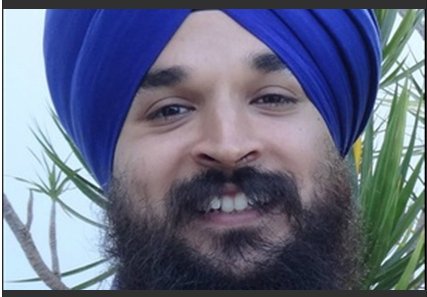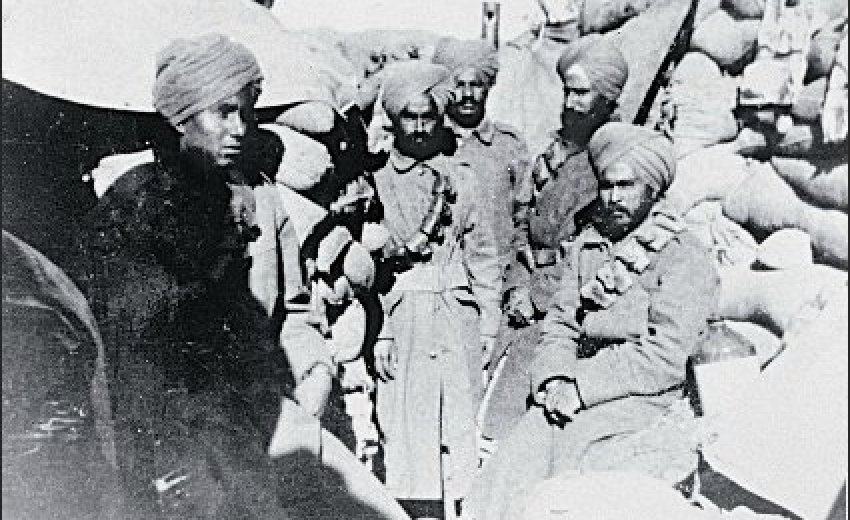An often overlooked aspect of Anzac Day is the role Sikhs played both in fighting for, and dying in, Australia during wartime.
 |
| Sikhs soldiers serving alongside Anzacs in Gallipoli in 1915. (Australian Sikh Heritage) |
"It doesn't happen as often anymore. However after 9/11 it did really pick up," he says.
Harjit follows the Sikh practice of wearing a turban and not cutting his hair or beard, but he talks with an accent that puts him in the league of Paul Hogan and Steve Irwin.
"I do some cultural diversity presentations for the WA Police down at the Academy. And when I rock up...I just talk in an Indian accent just to see what they think of me, and then in a few minutes' time I change it. It's quite funny; everybody judges, even I judge," he says.
Harjit's passion for breaking down prejudice led him to co-found the organisation Australian Sikh Heritage, which aims to promote the ties Australia has with Sikhs.
"One part of that rich shared heritage is with Anzacs and the Sikhs, and then a very important touch point in WWII being Manmohan Singh," he says.
Ready for war
 |
| Manmohan Singh was the first Sikh aviator and commanded a Royal Airforce Catalina in WWII. He was killed when Japanese planes attacked Broome in 1942. (Australian Sikh Heritage) |
"Sikhs are only two per cent of India's population; however they contributed one-third of the million people that went from India as part of the volunteer army in WWI," Harjit says.
Sikhs fought alongside the Anzacs at Gallipoli with the 14th Sikh Regiment suffering possibly the highest casualty rate of any force during the Gallipoli campaign, with only 4 survivors.
"379 Sikh officers died on the 4th of June in 1915; it virtually wiped out the 14th Sikh Regiment," says Harjit.
These Sikhs were mostly from India, but research by Australian Sikh Heritage has also identified ten Sikhs from Australia who served as part of the Australian Imperial Force during WWI.
In WWII Australians and Sikhs found themselves fighting on the same side once again. While the Sikhs' biggest role in this war was in Europe, they were also active closer to Australia.
"The biggest interaction we have found is the Sikh prisoners of war who were liberated by the Australians in the Malaya region, and most of them were brought back to Australia to be rehabilitated," Harjit says.
Lost in history
 |
| Harjit Singh is a New Zealand born, Australian, with Sikh heritage. He wants to increase awareness of the connections between Australia and Sikh people through history. (Australian Sikh Heritage) |
As an accomplished pilot, Manmohan Singh was one of the first group of Indians to travel to England to join the Royal Air Force in 1939.
After hunting submarines in the Atlantic from a Sunderland flying boat, he was promoted to Flying Officer and given command of a Catalina flying boat in the Philippines.
But as the Japanese forces advanced south through Asia, Manmohan Singh was forced to withdraw south along with other allies. He eventually landed his Catalina on Roebuck Bay at Broome, which was thought by many to be out of range of Japanese planes.
Manmohan Singh was onboard his flying boat moored on Roebuck Bay on the morning of 3rd March, 1942. Nine Japanese Zeroes fitted with detachable, long-distance fuel tanks strafed his plane along with 22 others that day.
"In one of the books we've read, it seems like he did survive the actual explosion. However, Manmohan Singh wasn't able to swim, and therefore drowned," says Harjit.
Although he commanded a flying boat, it seems that Manmohan Singh, like many Sikhs from the landlocked Punjab, had never learnt to swim.
Although Manmohan Singh had been a Sikh hero of his day, his demise so far from his Punjab home went barely noticed by history.
"He's been lost in Indian military history as well because of the timing and the whole division of the country," Harjit says.
Harjit hopes to complete Manmohan's story in Sikh history, and he's continuing to try and discover if his body was ever recovered from Roebuck Bay and if he has a grave. But he's also trying to broaden Australia's history so that more people understand how Sikhs took part in some of our nation's defining moments.
"I suppose it links back to the names I get called out in the street... Maybe if these guys knew that we're not so different after all... that turbaned, bearded men went and fought for Australia, that turbaned, bearded men died in Australia fighting for the British forces, the Allies... that we can really progress as Australia being that champion for diversity."

